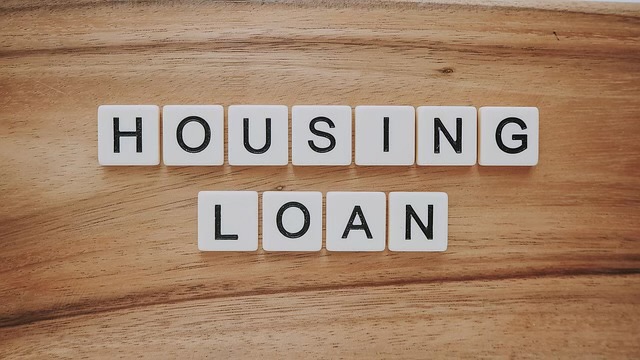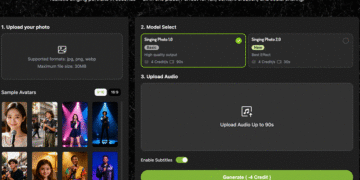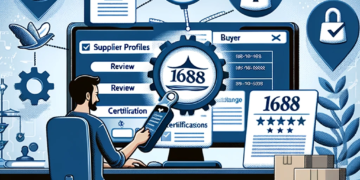To calculate self-employed income for mortgage loans, lenders often use your average net income from the past two years of tax returns. Lenders ask for Notice of Assessment, T1 generals, and business financials to check steady earnings. They may add back certain expenses to adjust your income. Rules can change by lender and loan type. Knowing what counts helps you plan and boost your chances. The main section shows steps and tips in detail.
The Lender’s Perspective
Lenders view self-employed income with suspicion. They want to quantify risk and verify that their borrower can service the loan. Anyone with more than 25% of his or her income from non-salary sources. Lenders want evidence of stable earnings, usually for at least two years and occasionally longer if things appear unstable.
Risk and Stability
Lenders fret about risk. Variable income implies a greater risk of missed payments, so they look for indicators of stability. Demonstrating a recurrence of income, even in challenging moments, minimizes their anxiety. For instance, a consultant who can demonstrate similar income each year (even a down market) appears less risky. Lenders typically concentrate on the worst year’s income, not the best, so it’s critical to have as few dips as possible.
Showing proof of long-term contracts, repeat business or strong client relationships can swing this in your direction. For instance, a freelance designer with contracts that extend for years can demonstrate stable relationships to lenders. It’s equally valuable to demonstrate a history of how your business handled slow periods–did you keep up with expenses or did you find new clients quickly.
Predictable Cash Flow
- List seasonal dips in income (e.g., lower winter sales).
- See how you account for these dips (like a savings buffer).
- Don’t just show cash flow for one year, show it for at least 24 months.
- Bring with a clear cash flow statement, with charts or tables if you can.
Leverage your historical information to support your argument. If income falls at the same time each year but rebounds, illustrate this. Lenders will like the foresight and openness. A nicely crafted cash flow statement helps illustrate the picture and cuts through the mumbo jumbo.
Business Viability
- Get a reference letter/testimonial from a long-term client. This demonstrates that your company is respected and reliable.
- Provide important metrics such as year over year growth, client retention, or repeat business. These figures say something to the vitality of your business.
- Include multiple client testimonials for additional heft. These words provide social proof that your service is trustworthy.
- Talk about market trends. If your industry is booming or stable, say so. For instance, if you’re in digital marketing, emphasize industry statistics indicating demand is on the rise.
How Lenders Calculate Your Income
Lenders are interested in your actual net income, not just what your business earns before expenses. They care what you actually bring home after all your expenses based on your tax documents. Most will consider the previous two years, averaging your net income to identify a consistent figure they can apply. This assists them in understanding your income steadiness and mitigating their risk.
1. Your Tax Returns
Begin by gathering your previous two years of personal and business tax returns. Lenders use these to confirm your income. If you’re self-employed, you’ll require your T1 Generals and T2125’s, or similar in your country.
Accuracy counts. If your tax returns don’t correspond to your real income, lenders can get skittish. Just make sure to always check for errors. If there’s a discrepancy–such as an occasional drop or surge–justify it. That might be from a large expense in one year, or a late payment. Using tax software makes your documents neat and shareable. This saves time and reduces stress when your lender requests evidence.
2. The Two-Year Average
Lenders calculate your average monthly income by examining your last two years. They total your net income after expenses and divide by 24 months. This provides them a feeling of your actual, consistent income potential. Most lenders like to see this average increasing, not decreasing.
Demonstrate your income streams. If your income fluctuated significantly in a year—say you had a major project or lost a client—be candid about the reason. This makes you appear to lenders to be a lower risk. Here’s a simple table:
| Year | Net Income (in $CAD) |
| 2022 | 55,000 |
| 2023 | 62,000 |
Average: (55,000 + 62,000) / 2 = 58,500 yearly, or about 4,875 each month.
3. Common Add-Backs
Lenders sometimes add back other costs, such as depreciation, to your net income, since these aren’t cash expenses. Not all deductions are equal—personal and non-business expenses don’t bolster your argument.
You’ll have to provide evidence for each add-back. Save receipts or neat notes for things such as mileage or home-office expenses. They can make it easier to get the loan you want by boosting the income you qualify with.
4. Analyzing Deductions
Review your deductions and separate actual business expenses from personal. Lenders don’t want to see personal spending in there as well. List out your business-only expenses, such as supplies or rent.
Be prepared to support anything out of the ordinary. If anything pops out, be prepared to address it.
If in doubt, ask your accountant.
5. Income Trend Analysis
Examine your income over time for trends. If you watch it dip, lenders are going to inquire why. If it’s flat or increasing then that’s a huge score on your side.
Charts or graphs work well here.
Essential Financial Documents

Getting a mortgage mortgage loans for self-employed is all about demonstrating concrete evidence of your income and the stability of your business. A checklist keeps things smooth. Lenders need recent tax returns, business statements and bank statements. Each must be consistent with what you say you make. Having documents prepared not only creates efficiencies, it establishes credibility with lenders that want to understand the holistic view of your financials.
Tax Filings
Tax filings are primary evidence of your income. Lenders typically request your personal and business tax returns for the past two years. These forms have to be accurate. Make sure the income displayed aligns with what you’re going to tell the bank. If your income shifted due to tax changes, such as a significant increase or decrease in deductions, have an explanation prepared. Nearly all lenders will require IRS form 4506-T in order to verify that your tax information aligns with your submission. For instance, if you had a sales drop last year from a worldwide event, display the figures and write a quick annotation on the cause.
Business Statements
Profit and loss statements are what lenders want to see. These separate out your revenues, expenses, and profit. A transparent P&L lets you know if your business is consistent or volatile. Balance sheets are crucial, too—they outline what your business possesses as compared to what it is indebted. Lenders use them to verify your company is strong enough to back your loan. Add a highlight of key numbers, such as year-over-year revenue trends or large expenses, so lenders can identify patterns. For instance, if you own a business that pays down debt fast, emphasize this to demonstrate your financial conscientiousness.
Bank Records
Bank statements provide a real-time glimpse into your cash flow. Collect at least six months’ worth of statements, both personal and business. Lenders verify consistent deposits correlating to the income on your tax returns. If you frequently move money between accounts, mark these clearly as well. Line up your statements by date, beginning with the most recent. If you get a month with sparse or no deposits, be prepared to justify—perhaps a client was late with a payment or you went on a business trip.
Business Formation
Evidence of business formation is critical. Bring proof if you operate a sole proprietor, LLC or corporation. Add any local or international business licenses you have. Lenders want to know your business is legitimate. Detail any changes in your business configuration, such as switching from a partnership to a corporation. Here’s how this can impact lenders’ perception of your risk or income counting. If your business expanded and you took on new partners, refer to how this impacted your income.
The Unwritten Rules
Self-employed mortgage applicants get more than numbers and paper. Lenders consider your narrative, the state of your industry, and your aptitude for managing volatility. These unwritten rules can tip the balance even if your paperwork looks immaculate.
Your Business Story
A powerful business narrative supplements the gaps your tax returns leave unaddressed. Lenders want to know whether you bootstrapped your business, or inherited the family store. Demonstrate how you discovered your niche, developed your audience, or scaled services. Share explicit figures–such as how you increased your revenue 30% in the last year after launching a new product. By this it lays out an image of solid, intelligent growth.
Distinguish yourself by identifying what differentiates your business. Perhaps you utilize environmentally-friendly raw materials or provide a service no one else does in your community. If you had hard months—say you lost a big client, or endured a market dip—show how you slashed costs, discovered new partners or pivoted fast. Lenders want evidence you don’t fold under stress. Personalization can make the underwriters view you as more than a file.
Industry Health
They care about how your industry is doing. Provide data to indicate trends. For instance, if you operate a tech consulting firm and the industry reports 10% annual growth globally, post it. It provides lenders with a feeling of permanence.
Discuss how you stay current w/ the marketplace. Perhaps you supplemented online services when the market bent, or got active in a local chapter to catch the next wave. Any awards or certifications or press coverage assist as well. If your business won ‘Best local bakery’ or got an ISO certificate, state it. These niceties demonstrate you’re esteemed and valued, not simply getting by.
Cash Reserves
Lenders want to see you’ve got a safety net. Maintain enough savings to cover mortgage payments for a few months. List cash in bank accounts or investments. Bring assertions as evidence.
If your income drops, your cash reserves inform the lender you’ll still pay on time. This makes you less risky, particularly if your income fluctuates on a monthly basis.
Credit Profile
Your credit score counts. Shoot for at least 620, but the higher the better. If necessary, clear up any problems on your report prior to applying. Accentuate your positives – on-time payments and low debts.
Provide an overview of your credit, not simply the score. Lenders want a complete view.
Managing Income Volatility
Self-employed income hardly ever looks the same from month to month. Lenders are aware of this and go over everything—T1s, NOAs, business records—to identify patterns. Developing a bendable budget around your income fluctuations allows you to plan for leaner times. Monitoring these seasonal or project-based dips and peaks in a spreadsheet or app provides lenders a clear context. Lenders want to see how you keep enough cash in reserve and what you do to maintain income steady, even during slow times.
Seasonal Businesses
Seasonal work, such as landscaping or tourism, can cause your income to soar and fall in different months. Lenders will want to know that you’ve established reserves to help cover expenses when business slows. Demonstrate to them how you save in high-earning months, or employ off-season gigs to patch holes. Provide them with previous years’ NOAs, like two or three years worth, to exhibit your trend. If you can, chart or table how your income sustains your mortgage throughout the year, not merely during the peak business periods.
Project-Based Work
Project-based work—consulting, creative or construction—frequently implies income arrives in tides. You may secure a large contract one month and then have nothing for a stretch. (Note: Be prepared to demonstrate how many projects you complete annually and their average duration.) Have contracts or letters of intent for future work – this demonstrates to lenders your pipeline isn’t dry. Maintain a folder of work done and the client’s comments. This assists you demonstrate you complete assignments, clients pay, as well as your company maintains progressing.
Demonstrating Consistency
They care about consistent income — so grab your last two or three years of T1s, NOAs and bank statements. This paperwork supports your narrative. Request references from happy customers or partners that vouch for you. Utilize straightforward profit & loss statements to demonstrate consistent or increasing profit. If you’ve established automatic savings or cash buffers, bring those up as well. Being organized and forthright with your finances establishes trust with lenders and might just tip the scales in your favor.
Other Practical Steps
Maintain robust cash reserves to assist with lean times. A few lenders allow you to add a percentage of untaxed income, so you can pump your figures up if your income is under their caps. Be prepared to describe your plan for steady income. See lenders who might accept alternative documentation if your income is difficult to substantiate with tax forms alone.
Available Mortgage Programs

Self-employed borrowers hundreds of mortgage programs available to them, all with their own program rules and benefits. Lenders understand that self-employed income looks different than salaried pay, so they provide a combination of alternatives. Choosing the right program is a matter of balancing your income stability, credit score, down payment, and how much paperwork you’re willing to handle.
Conventional Loans
Conventional loans are favored by self-employed borrowers who have a minimum two years of stable income history and a credit score above 650. Lenders in this category review tax returns, business statements and evidence of continuing business income. If you have under two years of self-employment, some lenders may still look at you if you have healthy cash reserves, a background of buying stable firms or an impeccable credit report.
Conventional income calculations are rigid. Lenders utilize your net income from tax returns, not your gross revenue, and frequently average your previous two years’ income to even out any fluctuations. They review your GDS and TDS to determine if you can afford making mortgage payments in addition to other expenses. These ratios concentrate on your housing and all of your debts, so if they’re both high, qualification can get sticky.
The primary appeal of conventional loans is their low rates and flexible terms. If you’re able to put down more than 20%, you may forgo mortgage default insurance altogether, which reduces your monthly charges. The trade-off is more paperwork and tighter standards, so being in order comes to the rescue.
Government-Backed Loans
Others self-employed borrowers call on government-backed loans, such as FHA or VA programs. These loans tend to have lower down payments as well, in some cases it can be as low as 5% with mortgage default insurance. Paper is slightly easier, requiring only one to two years tax returns or even stated income, particularly if you’re incorporated and demonstrate a minimum of six months’ worth of deposits.
Qualification for these loans will depend on your status. VA loans are available to veterans and FHA loans are accessible to most buyers. These solutions are more forgiving if your credit’s less than stellar or your business is fresh, but you’ll have to qualify. The main benefit is flexibility: government-backed loans tend to give a break on rates and down payment size, making ownership more realistic for self-employed people earlier in their careers.
Alternative Solutions
Other self-employed folks don’t align with the traditional or government-backed loan bucket. Private lenders and credit unions bridge this divide. They look at the broader picture—like current cash flow, business deposits or even just stated income—and not just tax returns. For instance, an incorporated business owner may only need to demonstrate six months of consistent deposits to qualify.
These non-QM lenders may be able to assist if you have unusual income sources or recent self-employment. They may take stated-income mortgages, but will demand elevated rates and larger down payments—10% or more at times. Certain programs restrict the type of property you are able to purchase, so be sure to inquire. The upside is speed and less paperwork. The negative is price and tighter restrictions on the property type.










































































